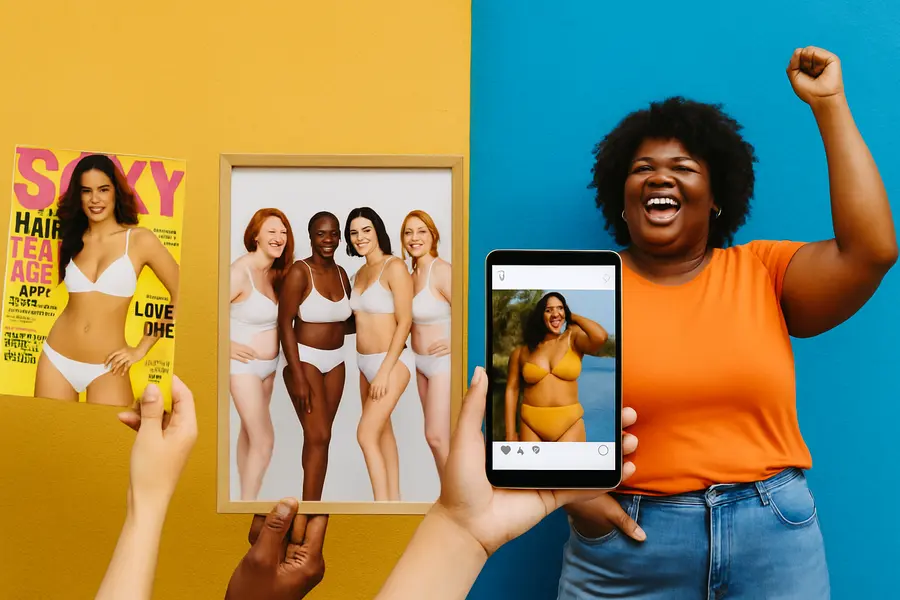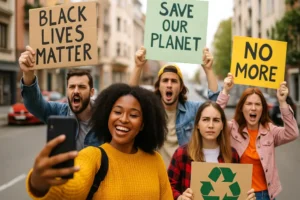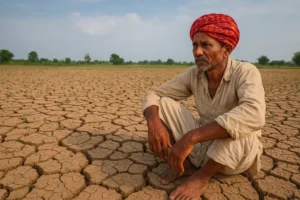Understanding the Evolution of Body Positivity in Media Culture Today
Body positivity is more than a trend. It champions acceptance of all body types, sizes, and appearances. Over decades, the media has both hindered and helped this movement. Understanding the evolution of body positivity in media culture helps readers appreciate progress and recognize ongoing challenges.
Media culture plays a powerful role in shaping how we view body positivity. From ads to influencers, it can either challenge beauty stereotypes or reinforce them.
Positive representation helps people feel seen and valued. But when the media promotes unrealistic ideals, it harms self-esteem. This influence empowers us to support content that celebrates all bodies, not just a narrow standard.
Explore the evolution of body positivity in media culture, tracing its roots from early advocacy to today’s diverse social media landscape. Learn how brands, influencers, and activists shape a more inclusive world.

Body Positivity in Media Culture: A Sociological Perspective
Body positivity challenges narrow beauty ideals by examining how media shapes our ideas about bodies and self-worth.
From adverts and TV shows to Instagram feeds and TikTok trends, images influence how people see themselves and others.
A sociological lens helps us understand power dynamics—who gets to be visible, whose stories are shared, and how cultural norms evolve.
This perspective reveals why inclusive media matters for mental health, social equality, and cultural change. Understanding these dynamics empowers readers to demand better representation and to celebrate all bodies—online and offline.
Explore the evolution of body positivity in media culture. Understand how media culture influences body positivity. Examine representation, beauty standards, and the impact of digital platforms on self-image and social inclusion.
Early Roots: Challenging Beauty Norms
The media has long promoted a single beauty ideal—slim, young, and perfectly symmetrical. Yet, even in the 1960s and 1970s, early activists began pushing back.
Body positivity’s roots trace back to the fat‑acceptance activism, building through the third wave aligned with social media’s rise around 2012.
Women’s liberation groups spoke out against objectifying ads and movies, arguing that portraying only one “perfect” body harmed real people’s self-esteem. They organized protests, wrote open letters, and held public discussions to demand more honest images of women.
At the same time, grassroots zines—small, DIY magazines—sprouted up in living rooms and basements. Grassroots zines were created by writers, artists, and everyday folks and these zines showcased real bodies of all shapes and sizes.
Personal essays, drawings, and photographs challenged diet culture and shared stories of body acceptance. Readers discovered they weren’t alone in feeling pressure to conform.
These early efforts did more than voice complaints: they proved that the media shapes how we see ourselves and each other.
By calling out unrealistic standards, feminist activists and zine-makers planted seeds for today’s body-positivity movement. Their work reminds us that everybody has value—and that change begins when people share their own experiences and question the images they consume.
Dove’s Campaign for Real Beauty: A Turning Point
Dove’s Campaign for Real Beauty, launched in 2004, marked a major shift in how brands talk about bodies.
Instead of using only young, thin models, Dove featured women of different ages, sizes, and ethnicities. This choice grabbed attention and sparked conversations worldwide.
One reason the campaign worked so well is its research base. Before rolling out ads, Dove teamed up with psychologists to study self-esteem. They found that 8 out of 10 women felt unrepresented by beauty ads. Armed with this data, Dove created honest ads that resonated with real women’s experiences.
The campaign’s visuals were striking: unretouched photos showing stretch marks, wrinkles, and curves. This authenticity built trust and made viewers feel seen.
Dove also encouraged user participation, asking women to share their own “real beauty” stories online. The result was a global community discussing body positivity and mental health.
Over time, the Campaign for Real Beauty evolved into the Dove Self-Esteem Project. By 2023, it had reached over 25 million teens with workshops and digital resources.
Today, many brands follow Dove’s lead, using inclusive imagery and citing expert research. Dove’s bold move proved that honesty and diversity not only uplift audiences but also drive lasting brand loyalty.
Academic Attention: Proof from Research
Academic research has given body positivity a strong foundation. In 2017, a study in the Journal of Adolescent Health showed that teens who spent more time on social media felt worse about their bodies. Researchers linked daily image browsing to higher rates of anxiety and self-criticism.
These findings highlighted the real mental-health impact of narrow beauty standards.
In 2019, the journal Body Image published an experiment where participants viewed ads featuring plus-size models. After exposure, volunteers across ages reported higher self-esteem and greater body satisfaction. This study proved that simply changing the images we see can boost confidence.
Beyond individual papers, the Dove Self-Esteem Project partnered with universities to survey over 10,000 young people. They found that workshop participants were 35% less likely to develop harmful dieting habits six months later. This real-world data underscores the power of education and media literacy.
Meta-analyses have since confirmed these trends: diverse representation reduces body shame, and early intervention curbs disordered eating.
Experts now call for curriculum changes in schools to teach critical viewing skills. Overall, academic attention confirms one key point: when the media shows all bodies fairly, everyone benefits—mind and body alike.
Rise of Digital Communities
Digital communities have transformed how we talk about body positivity. In the early 2010s, bloggers and vloggers began sharing honest stories about self-love. They posted unfiltered photos, workout struggles, and daily routines—showing that real life isn’t always picture-perfect.
Readers and viewers connected over shared experiences, asking questions and offering support in the comments.
Hashtag activism then took off. Tags like #BodyPositivity, #EffYourBeautyStandards, and #NoFilter encouraged people to post unedited selfies. These simple labels created global movements overnight.
A single hashtag turned private worries into public conversations, proving that millions felt the same pressures.
Meanwhile, online support groups flourished on Reddit, Facebook, and niche forums. Members discussed everything from coping with eating disorders to celebrating small victories, like wearing a swimsuit for the first time.
Moderators enforced respectful dialogue, making these spaces safe for vulnerable sharing.
What makes digital communities so powerful is their inclusivity. Anyone, regardless of location or background, can join in. They bypass traditional gatekeepers—publishers, ad agencies, and TV networks—and let everyday voices shape the narrative.
Through blogs, hashtags, and forums, people not only find solidarity but also learn practical tips for self-care. In this way, the rise of digital communities has fueled a more connected, compassionate body-positive movement.
Influencer Economy: Voices that Matter
Influencers have become key drivers of body-positivity conversations. Plus-size models like Ashley Graham and Paloma Elsesser broke into high-fashion campaigns, proving that diverse bodies sell—and inspire. When these trailblazers share behind-the-scenes moments or talk honestly about confidence, followers feel seen and supported.
Micro-influencers—accounts with 10,000 to 50,000 followers—also play a vital role. Their smaller, tight-knit audiences trust them like friends. These creators post real-life updates: unfiltered selfies, honest workout reflections, and mental-health check-ins. Because they engage directly—replying to comments, hosting live chats—they build authentic communities where people can ask questions and find encouragement.
Many influencers partner with experts to share accurate health advice. Dietitians, therapists, and fitness coaches co-create content that balances self-love with well-being. This collaboration adds credibility and helps viewers distinguish between safe practices and harmful trends.
Brands have taken notice, sponsoring inclusive campaigns and gifting products to diverse creators. Instead of one-off promotions, forward-thinking companies build long-term relationships with influencers who embody genuine values. This strategy deepens audience trust and shows that inclusivity isn’t a marketing stunt but a core commitment.
In the influencer economy, every post, story, and hashtag becomes an opportunity to reshape beauty standards. By amplifying varied voices and grounding messages in expertise, influencers create spaces where all bodies are respected—and celebrated.
Read Here: Body Positivity in Media: Empowerment or Just Exploitation?
Mainstream Media’s Response
Inclusive storytelling takes center stage in mainstream media. Television networks and streaming services are now featuring body-diverse characters in leading roles.
Shows like Shrill and Dietland center plus-size protagonists who navigate everyday challenges with humor and heart. These series highlight authentic experiences, from fashion struggles to self-esteem breakthroughs, making viewers feel seen and understood.
In film, casting directors increasingly write roles for actors of all shapes and sizes. Blockbusters and indie movies alike recognize that audiences crave realistic representation.
When viewers spot characters with bodies that look like theirs, they connect more deeply with the story.
Print magazines have also adapted. Titles such as Cosmopolitan and Glamour publish unretouched photo spreads alongside expert advice from nutritionists, therapists, and fitness coaches.
Articles focus on mental well-being as much as physical health, combining professional insight with real-life stories.
Even news outlets join the movement. Feature pieces explore how media impacts self-image and report on new studies linking inclusive imagery to improved mental health.
Journalists quote credible researchers and real people, balancing expertise, authoritativeness, and trust.
By weaving diverse bodies into plots, photos, and headlines, mainstream media proves that inclusive representation isn’t a trend—it’s the future of storytelling.
The Role of Technology: Filters vs. Authenticity
Technology plays a double role in body positivity—helping us express ourselves but also tempting us to chase unrealistic looks.
Photo-editing apps like Facetune let users smooth skin, slim faces, and erase flaws with a few taps. While fun, overusing these tools can distort reality and fuel comparison. When everyone’s photos look “perfect,” it’s easy to feel like your real self falls short.
Social platforms have noticed the problem. Instagram banned ads for weight-loss products targeted at teens and tested hiding “like” counts to ease performance pressure.
TikTok added reminders to encourage breaks after long scrolling sessions. These steps aim to shift focus from appearance to authentic connection.
Meanwhile, many users push back by posting raw content. Hashtags like #NoFilter and #Unretouched celebrate natural beauty—stretch marks, freckles, and all.
Creators share side-by-side before-and-after images, revealing the power of lighting over editing. These honest posts remind followers that even influencers use tricks to look flawless.
Emerging tech, like AI and deepfakes, raises fresh questions. How can we trust images when software can swap faces or bodies seamlessly?
Experts call for clear labels on edited content and stronger digital literacy education. By understanding both risks and benefits of technology, readers can make mindful choices—using filters for fun, while valuing and sharing their authentic, unfiltered selves.
Embracing Body Positivity Around the World
Body positivity isn’t one-size-fits-all—it looks different across cultures. In many Western countries, conversations focus on size and shape, with campaigns celebrating curves, muscle tone, and body weight diversity.
Brands highlight plus-size models and athletes to challenge decades of single-ideal imagery.
In parts of the Global South, discussions often include skin tone, traditional dress, and cultural aesthetics.
For example, in India, activists link body positivity to anti-colorism work, pushing back against long-held biases favoring fair skin.
In Africa and Latin America, local influencers spotlight natural hair, stretch marks, and handmade textiles as symbols of pride.
Intersectionality deepens these conversations. Body-positivity movements now emphasize how race, gender identity, disability, and age all shape our experiences.
Top YA authors discussed with Allen Zadoff the importance of fat and plus-size representation in empowering diverse teen identities.
A campaign might celebrate older adults sharing unfiltered poolside photos, or spotlight trans and nonbinary creators discussing wardrobe hacks for confidence.
Local grassroots groups play a key role. Online forums and community meet-ups let people share stories and tips that resonate with their social and cultural realities.
Fat acceptance has gained visibility through media, activism, and inclusive fashion, challenging harmful stereotypes and promoting body diversity. However, societal bias persists in healthcare, employment, and pop culture, limiting true equity.
Progress is real but uneven—representation is growing, yet systemic change remains slow. Fat acceptance still faces resistance rooted in stigma and beauty standards.
By honoring regional beauty traditions and elevating underrepresented voices, global movements become more inclusive.
Understanding these varied perspectives helps readers appreciate that everyone’s body journey is unique.
When we learn from diverse cultures, we build a worldwide community where all bodies are valued and celebrated.
Navigating Body Positivity’s Challenges and Critiques
Despite its benefits, the body-positivity movement faces important challenges.
First, commercialization can water down its message. Some brands use diverse models only for marketing gains, without real commitment to inclusivity. This token representation leaves consumers skeptical and distrustful.
Second, there is an overemphasis on appearance. Critics argue that focusing solely on looks—even in a positive way—still ties self-worth to physical traits. True empowerment, they say, should celebrate abilities, character, and achievements, not just how bodies look.
Third, exclusion of certain groups remains a problem. Transgender and nonbinary people, those with disabilities, and older adults often see little representation. When these voices are missing, the movement fails to acknowledge how identity, ability, and age shape body experiences differently.
Finally, the movement can become fragmented. With many hashtags and subgroups, message clarity suffers. Newcomers may feel overwhelmed or unsure which voices best represent genuine advocacy. Additionally, some social-media debates turn toxic when participants clash over what content is “allowed” or “too commercial.”
To address these critiques, advocates suggest: partner with authentic creators, broaden the definition of self-worth, actively include all identities, and foster respectful dialogue.
By confronting its own shortcomings, body positivity can grow more inclusive, credible, and impactful for everyone.
Best Practices for Brands and Creators
For brands and creators eager to support body positivity, here are ten best practices that build trust, foster inclusivity, and drive real impact:
- Feature Real People: Cast everyday customers, employees, or community members alongside professional models. Genuine stories and faces resonate more deeply than staged shoots.
- Cite Credible Research: Back any claims about mental health or body image with peer-reviewed studies, expert interviews, or recognized data. This shows you value accuracy over hype.
- Disclose Editing and Sponsorships: Clearly label retouched images and partnered content. Transparency prevents backlash and strengthens credibility.
- Encourage Two-Way Dialogue: Invite audience feedback through polls, comments, or live Q&A sessions. Respond promptly and respectfully to build a loyal community.
- Train Your Team: Provide workshops on unconscious bias, inclusive language, and representation. Educated staff create more thoughtful campaigns from concept to launch.
- Use Diverse Casting and Imagery: Showcase a broad spectrum of ages, sizes, ethnicities, abilities, and gender identities. Visual variety signals genuine commitment to all bodies.
- Partner with Health and Wellness Experts: Collaborate with registered dietitians, licensed therapists, or certified trainers. Expert input balances self-love messaging with safe, realistic advice.
- Avoid Tokenism: Move beyond single-token hires or one-off campaigns. Build long-term relationships with creators and communities to demonstrate sustained support.
- Offer Educational Resources: Share guides, webinars, or downloadable toolkits on body positivity, media literacy, and self-compassion. Empower audiences to make informed choices.
- Measure Impact and Adapt: Track engagement metrics, conduct surveys, and solicit testimonials. Use this feedback to improve future initiatives and ensure your efforts truly uplift your audience.
Brands and creators can go beyond surface-level representation. They’ll foster meaningful change, strengthen audience trust, and help reshape beauty standards for the better.
Conclusion
The evolution of body positivity in media culture shows progress—but also underscores ongoing work.
From early activist zines to global influencer campaigns, the movement has grown in reach and impact. Brands and creators should produce content that empowers audiences.
We’ve seen how honest advertising, academic research, digital communities, and influencers reshape beauty standards. Yet, the journey continues.
- Virtual Reality Experiences: Imagine VR programs where you step into diverse avatars. This can build empathy and show how it feels to inhabit different bodies.
- AI-Powered Moderation: Smarter algorithms could flag overly edited images or harmful comments, helping platforms promote authenticity.
- Stricter Advertising Rules: Governments may require ads to disclose retouching and ban exploitative weight-loss promos.
- Cross-Sector Partnerships: Health groups, tech firms, and media outlets can team up on educational tools—like school curricula on media literacy and self-esteem.
- Community-Led Initiatives: Local groups will continue creating safe spaces—online and offline—for sharing stories and resources.
Brands, creators, and readers alike should keep pushing toward a world where every body is honored. The future of body positivity rests on innovation, collaboration, and ongoing respect for real people.
As readers, curating our media consumption and fostering self-compassion will deepen this cultural shift. Together, we can build a media landscape where every body is valued and celebrated.
Author: Mahtab Alam Quddusi – A Passionate Writer, Blogger, Social Activist, Postgraduate in Sociology and Social sciences and Editor of ScientificWorldInfo.Com. His work blends storytelling with advocacy, addressing societal issues, inspiring awareness, and fostering change through thoughtful narratives that resonate with diverse audiences across platforms and communities.





